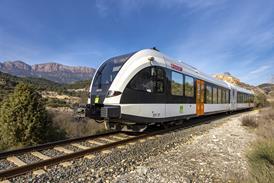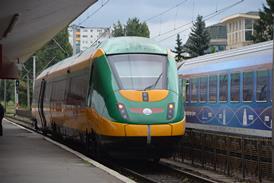THREE BOMBS were detonated on the London Underground at about 08.50 on July 7, with a fourth exploding later on a double-deck bus. At least 56 people died and more than 700 were injured in the attack that police quickly traced to suicide bombers from the Leeds area.
Two of the bombs exploded on the Circle Line, one on an eastbound train from Liverpool Street to Aldgate and one on a westbound service from Edgware Road to Paddington. The third explosion occurred on a southbound Piccadilly Line train travelling from King's Cross to Russell Square; as the bomb exploded in the confined space of a small-profile deep-level tunnel, it was by far the most deadly and the most difficult for rescue teams to deal with.
Over 200000 people were evacuated from the LU network between 09.15 and 10.15, and services were halted for the rest of the day. Commendably, Transport for London restored services on all routes not affected by the blasts early on the following day, with 95% of scheduled trains operating. Most services on London's main line network operated normally as well. While all three trains were extensively damaged, no tunnel sections collapsed, and services on the Circle Line were expected to be at least partly reinstated in late July. A criminal investigation at Russell Square and much more extensive damage means that several weeks will elapse before the central section of the Piccadilly Line reopens.
The attack coincided with the G8 summit in Scotland, but a day earlier London had been chosen as the venue for the 2012 Olympic Games, a decision that looks set to reinvigorate several major long-planned rail investment projects around the UK capital.
The bombings prompted reassessment of security on urban rail networks worldwide, but as Managing Director of London Underground Tim O'Toole said on July 13, 'there is no easy solution to the phenomenon of suicide bombings'. The vulnerability of railways to terrorists is unpalatable but true; according to UITP, the average number of attacks on public transport has risen from around five a year in the 1960s and 1970s to around 20, of which rail accounts for 14%. At the same time, the preparedness of operators and city authorities for dealing with the aftermath of atrocities has improved - a drill held at Tower Hill just weeks before the London bombs was no doubt instrumental in the way that emergency services responded.
After the bomb attack on suburban trains in Madrid on March 11 2004 (RG 4.04 p181), UITP set up a permanent working group devoted to security issues. This is currently preparing recommendations for station security plans, which are due to be presented at a conference in November. UITP will also start work shortly on a three-year EU-funded programme known as CounterACT, sharing experience and information between transport operators and identifying areas where further research is needed.
The danger, as in the past, is that the emphasis on security issues will siphon away funding destined for more productive investment projects. At a presentation in Roma on June 9, Guido del Mese of the Italian public transport association Asstra drew attention to the lack of government funding for security activities carried out by many public transport operators. In the USA, APTA President William W Millar noted that since September 11 2001 only $250m in federal funding had been allocated to security for transit used by 32 million people every day, but $18·1bn has been granted to the aviation industry, where domestic airlines carry just 2 million a day.
Finally, we are touched by and grateful for the messages of concern sent to our offices in London. Thank you.




















